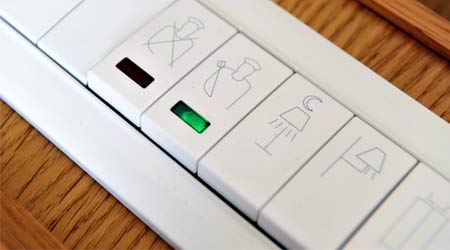Jump-Starting Lighting Control Systems
Part 1 of a five-part article on lighting controls
Energy codes mandate the use of lighting controls in most new institutional and commercial buildings. As a result, manufacturers of lighting controls are meeting the demand by focusing on making their products easier to start up, use and maintain.
Today, some type of device controls about 30 percent of installed lamps, according to the U.S. Department of Energy. The 2012 Commercial Buildings Energy Consumption Study suggests controls are more prevalent in larger buildings.
As lighting controls become more prevalent, demand is increasing to commission these systems during new construction as a quality-assurance process designed to minimize errors across the construction process.
As demand increases for lighting controls and the installed base of controls grows, so does the opportunity for maintenance and engineering managers in existing buildings to use retrocommissioning to ensure the installed controls satisfy both the design intent and owner requirements.
Many control systems did not have the benefit of formal commissioning at the time of installation, while others received proper commissioning but might have fallen out of sync with building use. Periodically tuning installed controls can maximize the system’s performance and deliver the greatest value to the organization. In fact, research suggests retrocommissioning can optimize performance and energy savings, resulting in satisfactory paybacks and making it a lighting upgrade option in its own right.
The LEED green building rating system from the U.S. Green Building Council, as well as the latest generation of energy codes based on ASHRAE/IES 90.1 and IECC, require commissioning. A formal commissioning process is defined in ASHRAE Guideline 0-2013, which formed the basis of ANSI/ASHRAE/IES Standard 202 and IES Design Guide 29.
In a new construction project, the commissioning process broadly encompasses defining owner project requirements, basis of design, functional testing, owner training, systems manual and, in some cases, a post-occupancy evaluation.
Retrocommissioning focuses on functional testing within the context of the owner’s defined project requirements, which might have changed since construction, and the basis of design. During evaluation, the owner or manager might decide to capitalize on technological advances and install a new lighting control system, which might expand the scope of the retrocommissioning process to one used for a new building.
Retrocommissioning is applicable if changes have occurred to the space or the lighting control system. For example, a renovation might result in new surface finishes, which might change reflectances. Or a building performance contract might switch to a new vendor. Or a time schedule might change to address heavier seasonal workloads but might not change back. Also, the lighting control system might have been updated with new features, or operators might not use certain features existing at time of installation.
By reviewing the current operation of the lighting control system, managers can identify deficiencies that require resolution. These reviews might be periodic and scheduled, making retrocommissioning an ongoing process that is part of maintenance. Ideally, the party performing the retrocommissioning will be knowledgeable about lighting controls, as well as the specific installed control system.
Related Topics:
















